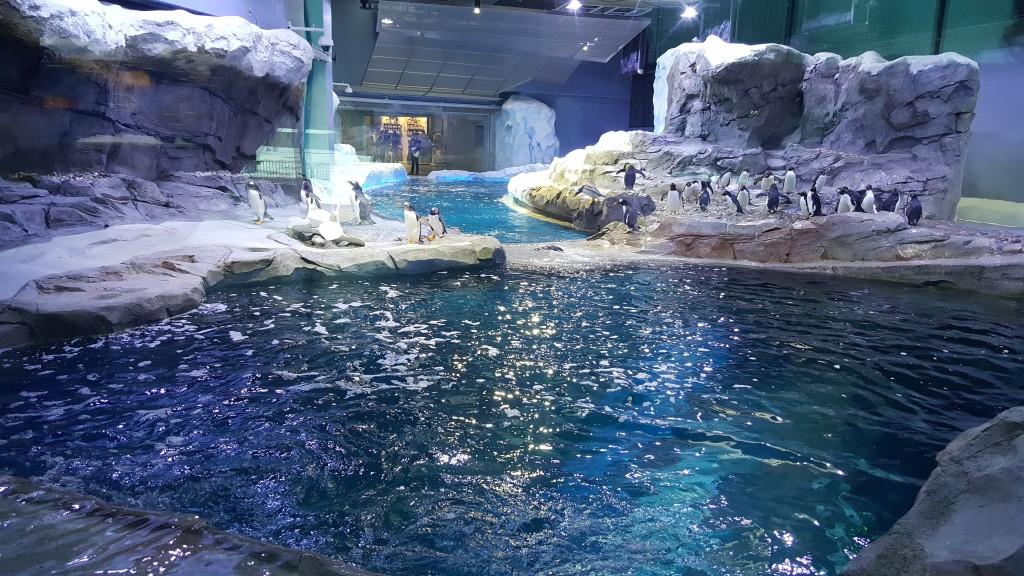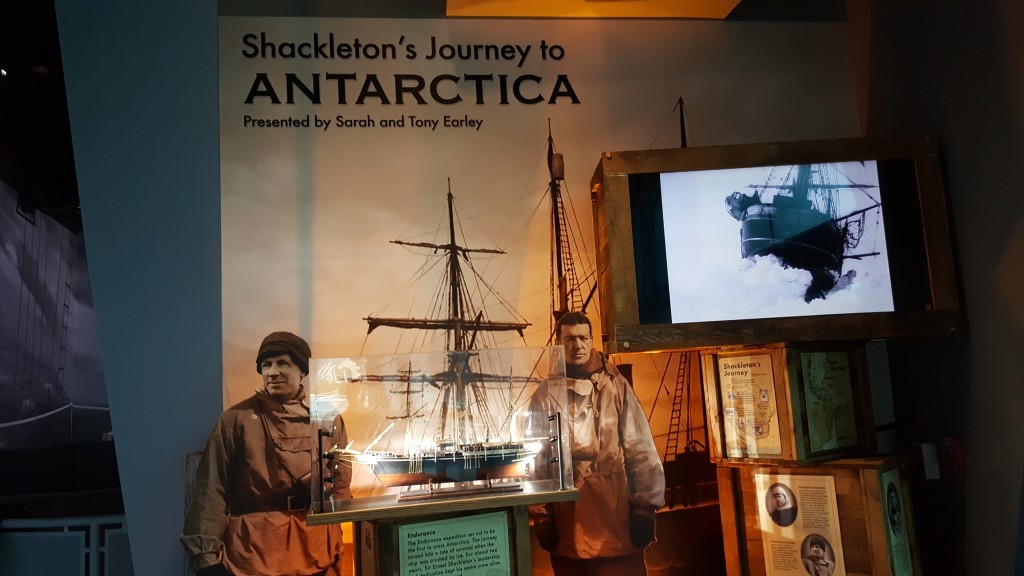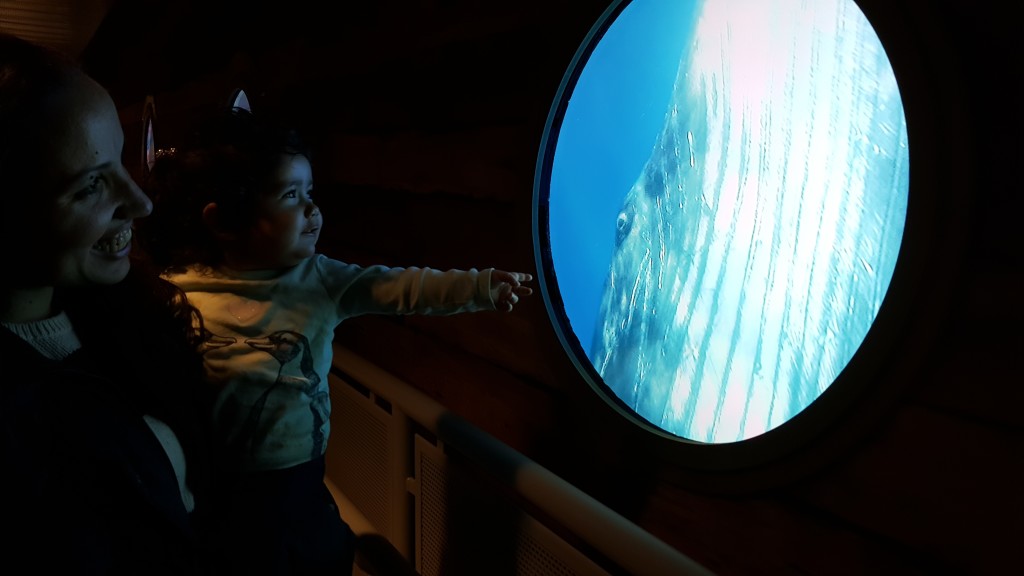While the early onset of spring-like weather in Metro Detroit had many wistfully wishing warm thoughts of summer, zoo enthusiasts like me kept our dreams fixed on ice and snow. Or at least the kind with penguins in them!
 I had the amazing opportunity to see the new Polk Penguin Conservation Center as well as sit down with Detroit Zoological Executive Director Ron Kagan and Board of Directors member Anmar Sarafa to discuss this magnificent undertaking. My children and I– along with most faithful zoogoers — have eagerly been popping our heads through the holes of the wooden walls outside the Center’s construction site in order to watch the building grow into the astonishing angular iceberg it has become. As it turns out, it’s more incredible than I could have imagined, and that’s no doubt thanks to the amazing stories that go beyond those physical walls.
I had the amazing opportunity to see the new Polk Penguin Conservation Center as well as sit down with Detroit Zoological Executive Director Ron Kagan and Board of Directors member Anmar Sarafa to discuss this magnificent undertaking. My children and I– along with most faithful zoogoers — have eagerly been popping our heads through the holes of the wooden walls outside the Center’s construction site in order to watch the building grow into the astonishing angular iceberg it has become. As it turns out, it’s more incredible than I could have imagined, and that’s no doubt thanks to the amazing stories that go beyond those physical walls.
Maintaining a Legacy
In some ways, this is a story that began in 1968, when the original penguinarium was built. Not only was it the first dedicated facility for penguins, but it was also innovative in its design: allowing the penguins to swim in loops rather than merely back and forth. “There’s been a history here of being in the forefront of penguins in captivity,” Kagan proudly explained. “As we did with polar bears, [we decided] let’s not do an evolution. Let’s take a quantum leap forward.”
The Endurance
And leap they most certainly did. Part of what I love most about the zoo is the emphasis on experience and education. My favorite exhibits are the ones where we are more than just observers, but actual participants. And so, while the physical location of the Center exists within the zoo walls, it begins by taking us aboard Sir Ernest Shackleton’s ship, The Endurance, on the incredible 1914 crossing of the Drake Passage.
While this is my first introduction to Sir Shackleton, his epic voyage has clearly been a long-lasting inspiration. “Shackleton was somebody who I knew well because as a child I read his story. I found it captivating. It’s such a compelling story,” Kagan told me. “People call it the most incredible survival story ever. 28 people and no one was lost. Trapped in the Weddell Sea. Ship crushed. Trapped for 18 months. No one knew they were alive. No one could have rescued them anyway. It defies odds in such an astronomical way.”
And so, while we have been watching the building rise up, there is an even more dramatic story below. When the doors first opened, the first thing I saw was the brilliant blue sparkles of the waters of the Drake Passage. We are on the shores of South America, about to embark on Shackleton’s ship. Similar to the Arctic Circle, we need to be taken underground — in this case, 25 feet underwater. Unlike the winding outdoor venture to the polar bears, however, this one takes us on a 4-D adventure simulating Shackleton’s expedition. Kagan described the intense level of research that went into forming every part of this experience. Even the boards of the floor were researched in order to emulate the deck of the ship, “Right down to the size of the planks and spacing of the bolts,” Kagan said. Surrounded by wall-projected videos of the Antarctic waters, we felt as though we were standing on the bow of the ship. Above us, the sky changed from morning to a beautiful night sky (which, Kagan said, was also researched for astronimical accuracy). As the waters shifted from calm to stormy, we felt the actual mist against our faces!
The Antarctic
Once we walk down the upper deck of the ship, we come through a fog that lets us know we’ve reached the Antarctic Convergence. Kagan and other zoo members have taken five trips to Antarctica over the past 21 years, carefully cultivating an experience that would be as real as possible. “What we were trying to do is understand and experience Antarctica and really ensure the authenticity of how the things we do here look and feel,” Kagan said.
As we traveled below deck, we looked through windows in the ship’s wall to view video of leopard seals, giant whales, squids, and other Arctic sealife. Later, on the way up the stairs out, we witnessed the sounds and sights of iceberg “calving.”
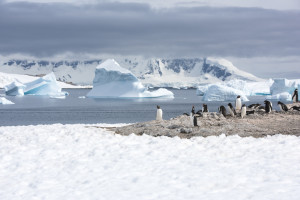
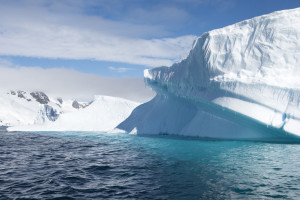
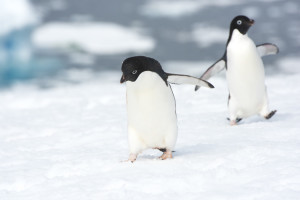 photos of Antarctic fieldwork courtesy Anmar Sarafa
photos of Antarctic fieldwork courtesy Anmar Sarafa
You can see more pictures and read more about the Antarctic fieldwork here!
The Penguins
The Center is named for Stephen Polk, who donated $10 million toward the project’s creation. While he is also a long-time admirer of Sir Shackleton, birds are at the center of his heart. In an interview with DBusiness.com, Polk said, “I remember going to the zoo as a child in elementary school, and it’s been part of my family’s history as long as I can remember. I was a B.A. in biology, and then ended up attending graduate school at Michigan and working for the forest service in a bird project. So birds have always been a favorite of mine.”
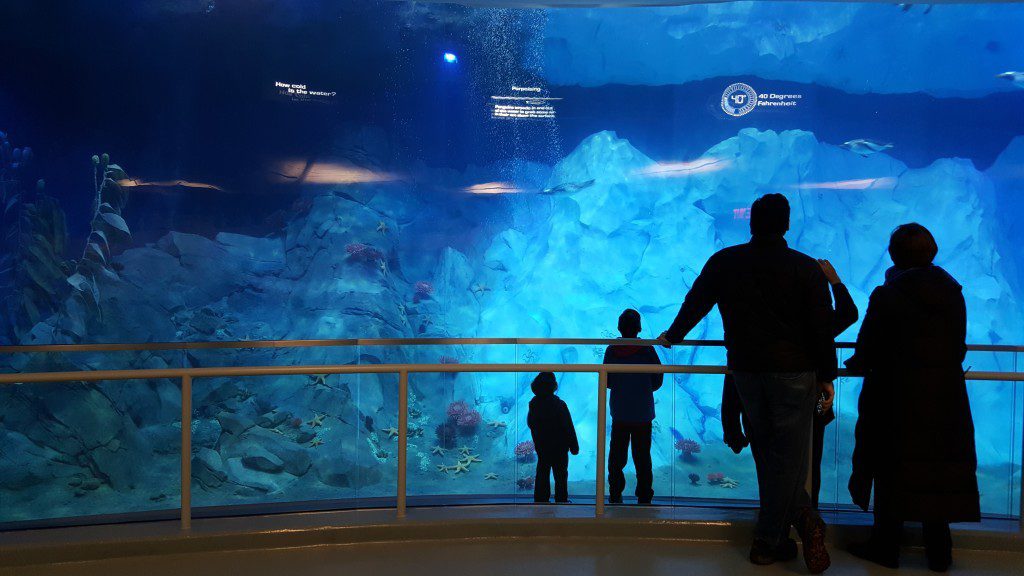
The Center features over 80 of this particular tuxedo-suited bird across four different species: macaroni, rockhopper, king, and
gentoo — the newest addition to Detroit. Although there are 18 species of penguins, not all can exist at the exhibit’s 37 degree environment (don’t worry — this is the just the temperature for the penguins not their visitors!!). In addition to being climate-ready roommates for the existing penguins, gentoos are super fast, they are actually the fastest swimming penguin. “It’s a torpedo, so they are incredibly cool and they spend an enormous amount of time in the water,” Kagan smiled.
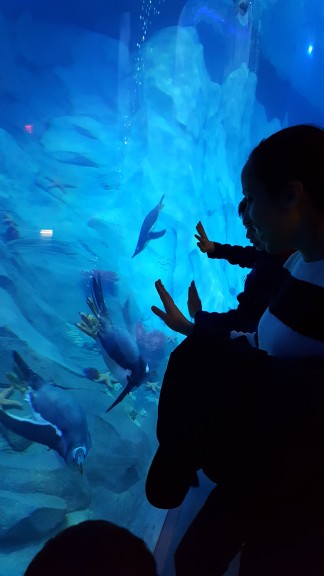 What’s most amazing are the features that allow us to come face to face with these extraordinary swimmers. There are two acrylic tunnels that offer underwater views of the penguins from both above and below. These are similar to the Arctic Ring of Life, but given both the nature and number of penguins, there will always be ones swimming around. Watching the birds dive below water is something that can’t even be seen in the actual Antarctic wild! Equally breathtaking is the wall to ceiling window into the penguins’ world in between the two tunnels.
What’s most amazing are the features that allow us to come face to face with these extraordinary swimmers. There are two acrylic tunnels that offer underwater views of the penguins from both above and below. These are similar to the Arctic Ring of Life, but given both the nature and number of penguins, there will always be ones swimming around. Watching the birds dive below water is something that can’t even be seen in the actual Antarctic wild! Equally breathtaking is the wall to ceiling window into the penguins’ world in between the two tunnels.
Like Shackleton, there is something about these birds’ ability to
survive that is worthy of our awe. Kagan wrote on the Zoo’s blog that “Antarctica is the only continent on Earth without a native human population” and has even described the Arctic waters as “aquatic turmoil.” And yet, because of their unique ability to handle the climate and thereby avoid land predators, these birds have, in a way, defied evolutionary odds.
In fact, as a reward for their fortitude, maybe that’s why the weather flipped back to winter — just in time for them to move! Watch them waddle to their new waters here!
New Stories Begin
Going inside the Center felt a bit like the magic of a real-life Charlie and The Chocolate Factory (but, you know, without the Oompa Loompas and horribly disobedient children). I couldn’t open my eyes wide enough to take everything in. Even after seeing everything Mr. Kagan described come to life, I have to say that the most memorable moment of my hour with him was the image of him as child reading Shackleton’s story. Maybe it’s the English teacher in me, but imagining this now well-established and successful man so encompassed by a book has the parent in me incredibly excited.
Because of Kagan and Polk’s experiences as children, my son and daughter now have the opportunity to experience something that will perhaps leave a mark just as indelible on them. What an incredible legacy!



